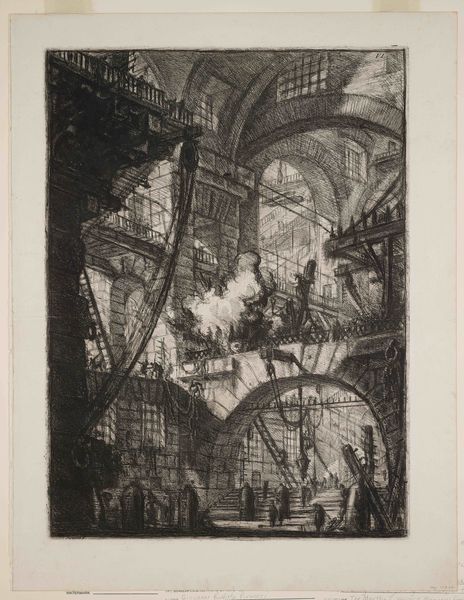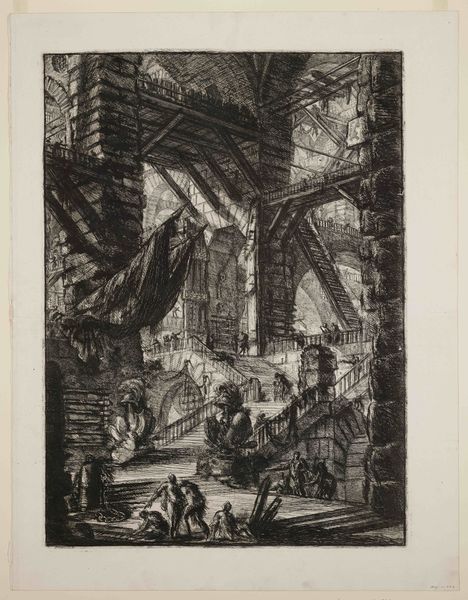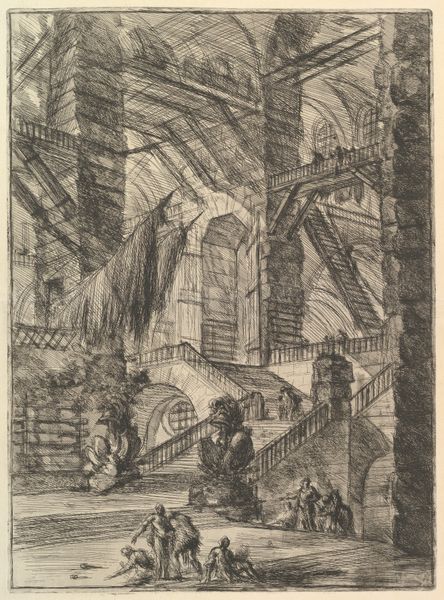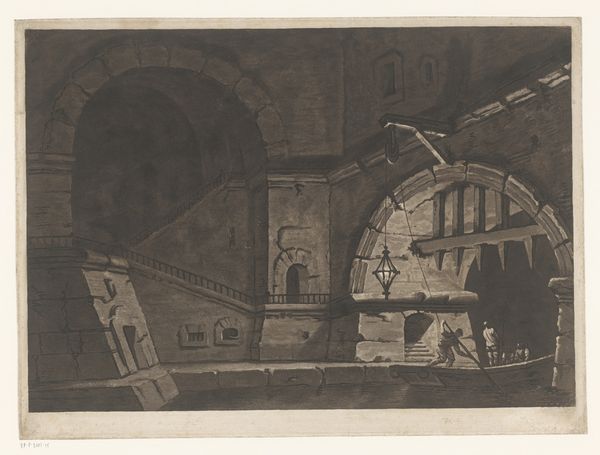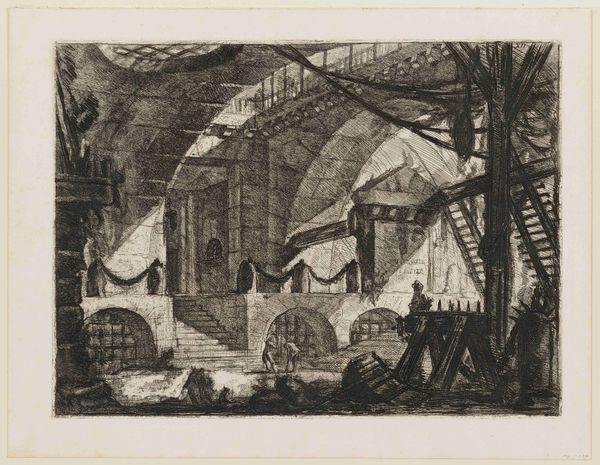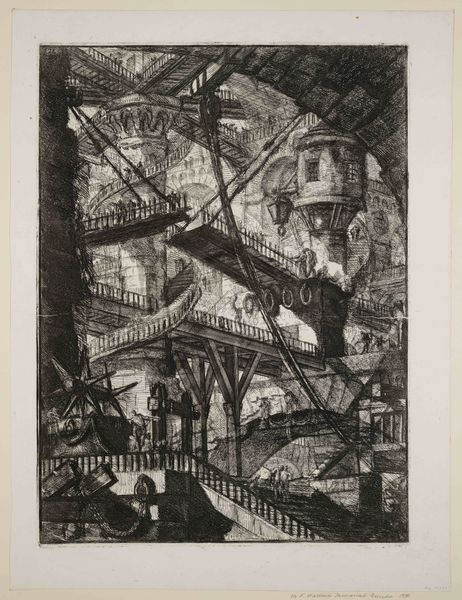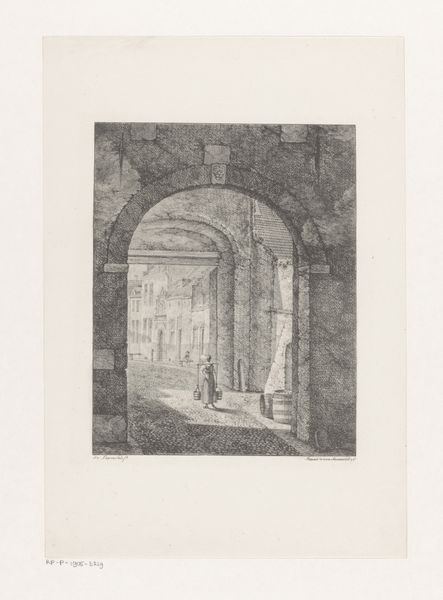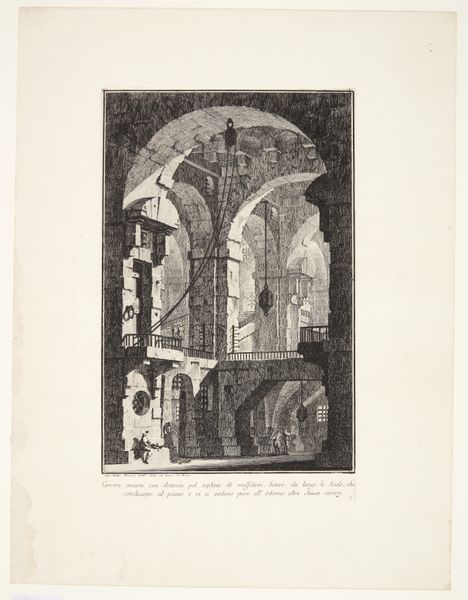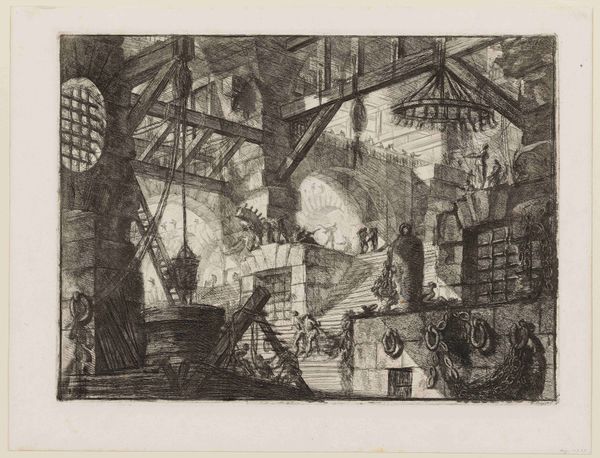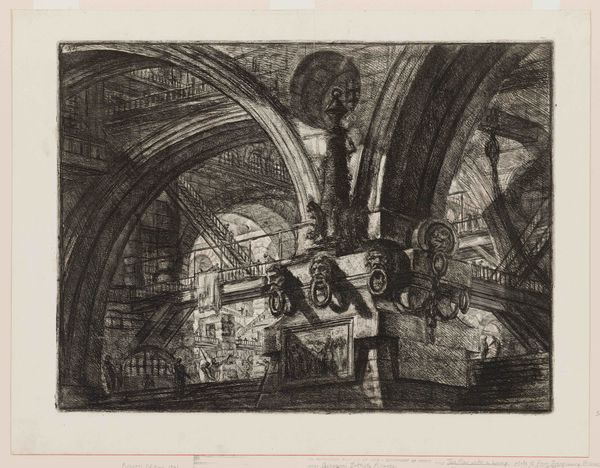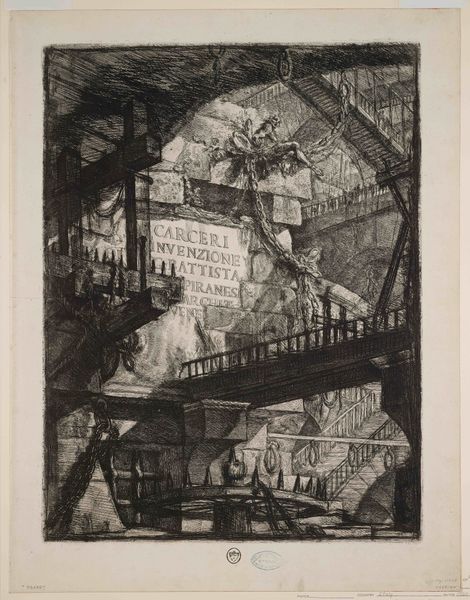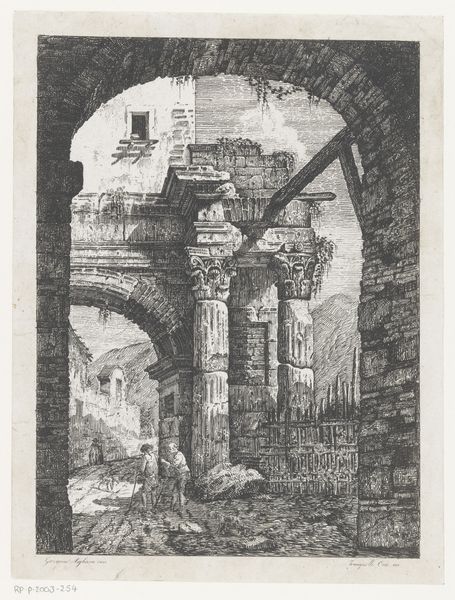
print, etching, architecture
#
baroque
# print
#
etching
#
perspective
#
form
#
line
#
cityscape
#
history-painting
#
architecture
Dimensions: 21 9/16 x 16 1/4 in. (54.77 x 41.28 cm) (plate)
Copyright: Public Domain
Editor: Here we have Giovanni Battista Piranesi's "The Grand Piazza," an 18th-century etching. It's a complex cityscape filled with dizzying architectural details. There's a really oppressive, almost claustrophobic feeling, despite the vastness suggested by the perspective. What's your take on this work? Curator: Oppressive is a powerful word here. I’d push us to consider how Piranesi's architectural fantasies might reflect the political realities of his time. Remember, the 18th century was an era of great social stratification. How does the imposing scale and theatricality, seen through print, mirror or perhaps critique these power structures? Editor: So, are you suggesting that the overwhelming scale represents the authority of the ruling class? The exaggerated perspective almost seems to satirize grandiose displays of power. Curator: Precisely! Consider also Piranesi’s choice of printmaking. Prints democratize art; they are reproducible and can disseminate ideas widely. Does this perhaps indicate a desire to critique these power structures by visualizing their inherent theatricality and making them accessible for public discourse? Who had access to those discourses? How would those conversations have played out differently along class lines? Editor: That’s a really interesting point about accessibility through prints. I hadn’t considered that in relation to its social commentary. I was so focused on the drama of the composition. Curator: Think about how the dark, deeply etched lines contribute to that dramatic, almost chaotic feeling. What social anxieties might Piranesi be tapping into by depicting this grandeur as somewhat unstable, almost crumbling? Editor: It feels like Piranesi is prompting us to question the supposed permanence of these institutions, suggesting that even the most imposing structures can be fragile. That there is beauty even in this sense of destruction. Curator: Exactly! The dialogue between form and power and between the establishment and those looking in, that’s where the richness lies. Editor: I never considered how deeply intertwined the form, technique, and the social messaging could be. Thank you! Curator: The pleasure is all mine. These types of intersections reveal some important and useful history!
Comments
minneapolisinstituteofart almost 2 years ago
⋮
Traces of Piranesi’s abandoned first draft—faint, intermittent straight lines that crisscross the background— reveal his improvisational working method. Using printing plates as sketch pads, torturing them with corrosive acids, and radically reworking them, Piranesi fully exploited the liberties afforded by etching. He ranks among the select company of artists—Rembrandt is another—who have done the same.
Join the conversation
Join millions of artists and users on Artera today and experience the ultimate creative platform.
